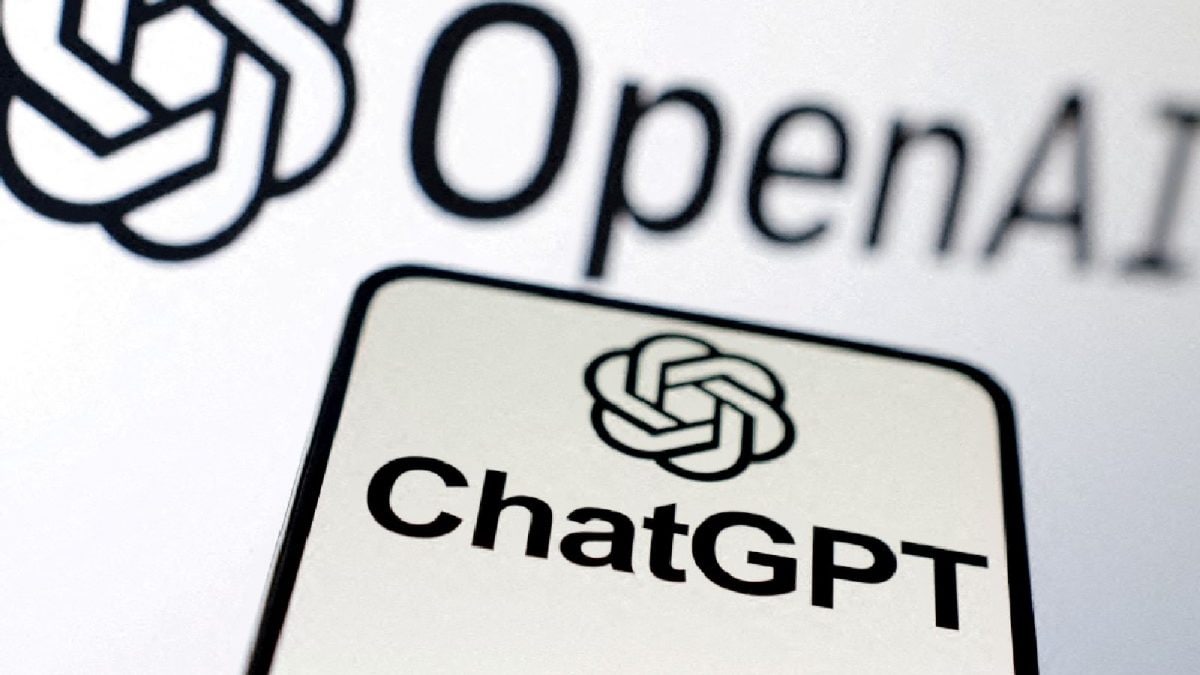Last Updated:
If Indian universities, creators, and small businesses all start using one AI ecosystem, that brand loyalty becomes geopolitical leverage.

In effect, India’s population is doing unpaid research for global AI development. And while companies call it “localisation,” it’s really a massive data harvest (Image: Canva)
India’s digital landscape is now the world’s biggest prize. With more than 900 million internet users, every major AI company, from OpenAI and Google to newer players like Perplexity, wants to get its foot in the door.
They’re flooding the market with free access, scholarships, and partnerships, but the move isn’t driven by kindness. It’s a long-term strategy: build user addiction first, charge later.
The Scale Story
India’s internet base is colossal, bigger than the population of Europe and growing by millions each month. It’s young, English-friendly, and experimental.
When an Indian user tries something new online, they’re not just testing it, they’re helping shape it. For AI companies, that’s gold.
A country with so many digital natives using mobile phones, learning through YouTube, writing in mixed languages, and generating new content every minute provides an unmatched testing environment. So when OpenAI, Google, or Perplexity give “free” premium access, it’s not philanthropy, it’s an investment in a behavioural shift.
Once Indians integrate these tools into daily life — to write assignments, summarize news, or automate office work, the dependency begins.
The Power Play
Every company wants to be the first AI name that Indian users remember. For Google, it’s about defending search. For OpenAI, it’s about brand familiarity.
For new players like Perplexity, it’s about market share. Whoever owns the user’s “first instinct” to search, write, or create with AI will own the next decade of the internet.
India is also a fertile field for partnerships. Telecom giants like Reliance Jio and Airtel are now crucial gateways.
By bundling AI tools into their internet plans, they’re helping global firms reach millions instantly. A free AI subscription isn’t just a perk, it’s a pipeline.
The Hook
The method is old, the scale is new. Give premium access to everyone – students, teachers, creators, start ups and watch habits form. Once people start using AI to draft, translate, and ideate, they won’t go back to doing those tasks manually.
And when that happens, monetisation becomes easy. In a year or two, the “free” tag fades. You’ll see tiered plans, time-limited credits, and “Pro” upgrades. The addiction stays; the invoice arrives. It’s how every digital revolution from streaming to cloud storage evolved.
Data: The Hidden Currency
Every query typed, voice prompt given, or image uploaded tells companies how Indians think and speak. That’s invaluable. It teaches AI to understand Indian English, local dialects, slang, and emotion. This data feeds future models, helping them sound more natural, less foreign.
In effect, India’s population is doing unpaid research for global AI development. And while companies call it “localisation,” it’s really a massive data harvest. Each “free” conversation is another line in their training set.
This also gives them an early edge in adapting to India’s linguistic diversity. AI trained on real Indian queries can later dominate regional markets effortlessly, while homegrown start-ups struggle to match that depth of data.
The Soft Power Factor
There’s another layer: geopolitics. The U.S. wants its AI models to stay dominant across the Global South, while China is advancing its own ecosystem. India, with its growing digital influence and English literacy, is the ideal bridge.
If Indian universities, creators, and small businesses all start using one AI ecosystem, that brand loyalty becomes geopolitical leverage. Whoever wins India’s trust now wins a future market of over a billion digital citizens.
The Local Cost
For Indian AI start ups, this is a storm. Competing with free global products is near impossible. A Bengaluru-based start up building a chatbot for students cannot survive if OpenAI or Google offers a more powerful version for free.
The result could mirror what happened during the smartphone boom: India became the biggest consumer base, but not the biggest creator base. The same risk exists with AI, India might become the world’s test lab, not its innovation hub.
Unless local players find niche strengths language depth, cultural insight, or government support they could get overshadowed by these global giants.
The Ethical Fog
There’s also a moral grey area. “Free” often means that users are paying in data and attention. India’s data protection framework is still evolving, and enforcement is thin. This makes Indian users particularly vulnerable to large-scale data mining.
AI companies may not be collecting personal information in the traditional sense, but conversational data – the way Indians express, question, and search is deeply revealing. Over time, it forms a cultural dataset that’s immensely valuable but owned by foreign firms.
What Happens When the Curtain Falls
Eventually, the free era ends. The same companies will introduce subscription tiers. What was once open and unlimited will narrow into paywalled packages. Students and creators, already dependent, will face a dilemma: adapt or pay.
The pattern is predictable. Some users will downgrade, but many will stay – because their workflows, businesses, or creative routines now depend on these AI tools. It’s not just a technical shift; it’s a psychological one. Once comfort sets in, it’s hard to leave.
At that point, the market will mature. AI companies will have loyal paying bases, improved models tuned on Indian data, and a strategic foothold in one of the world’s biggest tech populations.
The User’s Tightrope
For now, India’s users are the beneficiaries — and the experiment. Free access means limitless opportunity to learn, innovate, and create. Students can use AI for research, small businesses can draft marketing plans, and writers can explore ideas faster than ever before.
But the smart approach is balance. Enjoy the free ride but stay aware. Use this time to learn how these systems think, their strengths and blind spots. Don’t let one tool become indispensable. Keep exploring local alternatives, open-source platforms, and hybrid workflows.
Because when the paywall arrives, flexibility will be power.
The Larger Lesson
This isn’t just about India or AI. It’s about how the global tech economy works. “Free” has always been the sugar-coating before monetisation. The difference now is scale — 900 million users form a test population big enough to shift global patterns of behaviour.
For the AI companies, India offers not just revenue but reputation. Winning India means proving their tool can work for the most linguistically complex, cost-sensitive, and mobile-first society in the world. That’s the ultimate validation before they chase the rest of the planet.
Every AI company offering free access in India is playing a long game. They’re investing in habits, language data, and trust. For users, it’s a golden window — but one that will close.
Use this phase wisely. Learn, experiment, and create while access is open. Build skills that outlive any one platform. Because in the end, the smartest users won’t be those who use the most tools — but those who understand how the tools use them.
November 10, 2025, 12:40 IST
Stay Ahead, Read Faster
Scan the QR code to download the News18 app and enjoy a seamless news experience anytime, anywhere.







